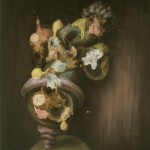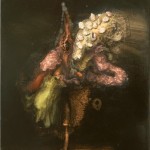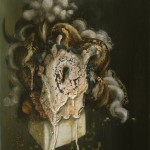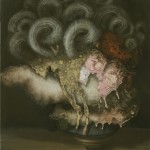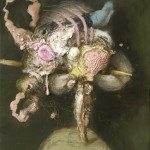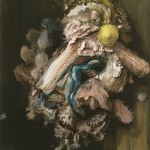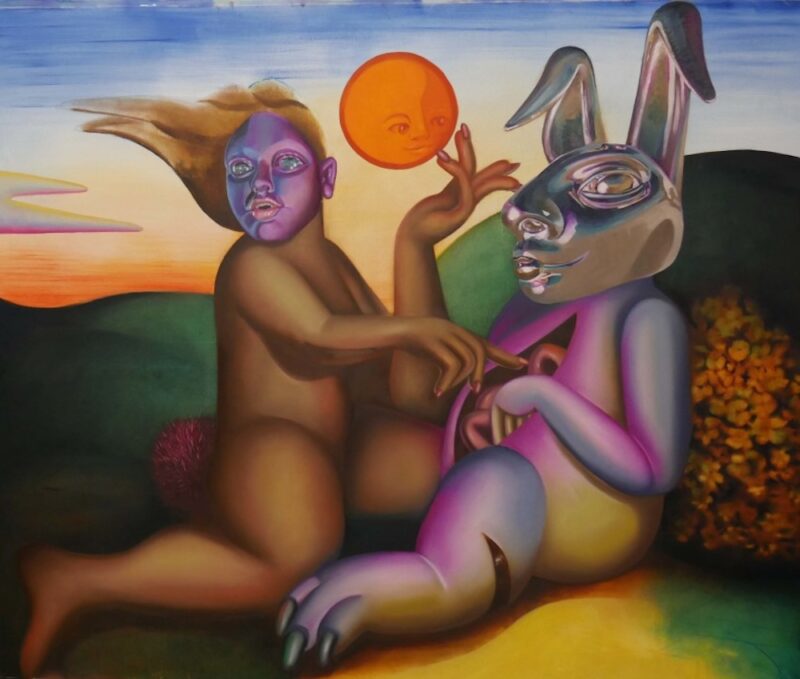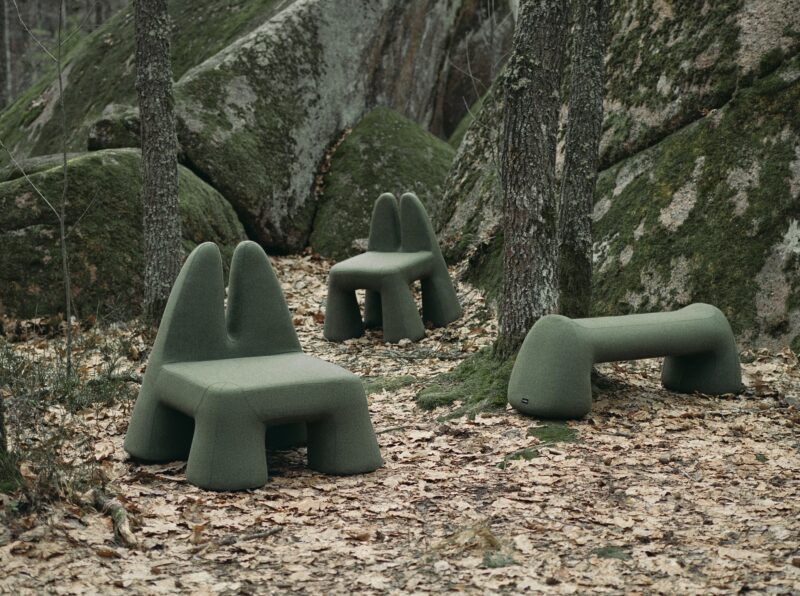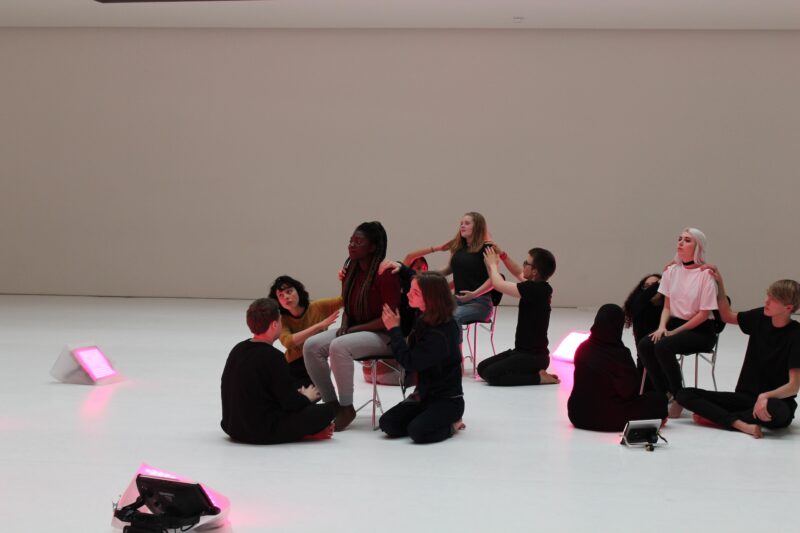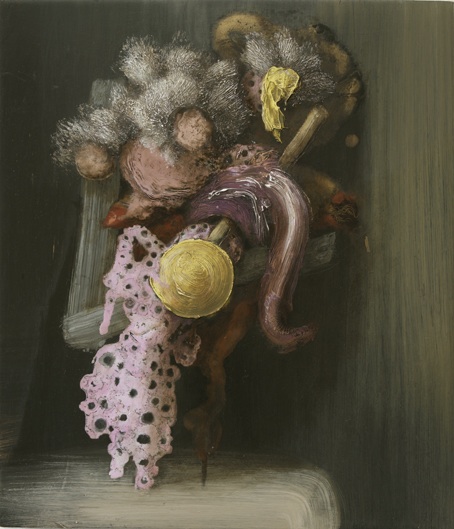
GL BRIERLEY “Matersatz” 8th October – 28th November 2010
The first solo exhibition Madder 139 of British artist GL Brierley. She currently has work in the Walker Gallery, Liverpool as part of the John Moores Painting Prize and the Liverpool Biennial and has previously shown nationally and internationally including at the Whitechapel Gallery, London, The Louise T Blouin Foundation, London, Natalia Goldin, Stockholm and Whitebox, New York.
In Powers of Horror: an Essay on Abjection (1982), theorist Julia Kristeva claims that the child can only truly separate from the mother by seeing her as abject. The child-subject hence establishes a conflicting attraction/repulsion dynamic with the mother that can later be transferred to an object – the fetish. GL Brierley’s paintings are infused with a distinct fetish-like quality and full of the discarded mother’s presence. The anthropomorphic figures in Brierley’s works conjure up decrepit and sexualised body parts that are at once grotesque and desirable, their obscenity intensified by the luxurious moiré oil in which they are draped. Some of these paintings are a disguised homage to womanhood, a womanhood that exists beyond eroticism, beyond motherhood, indeed beyond place at all. Some others stand more like anthropological investigations, or deranged pictures of natural wonders.
Looking at painting always involves perception and interpretation, but Brierley’s convoluted pictures seem defined by their capacity to trigger pareidolia, a psychological phenomenon whereby a viewer recognises shapes in abstract patterns. The artist constantly teases our imagination, for example adding to Supplacey (2009) a vaginal aperture, and to Baobola (2010) a penile nose. As this game of recognition unfolds, so does Brierley’s freak show. Each ‘specimen’ – the artist calls them ‘paint personalities’ – is represented on a stage like a monstrous performer, available on demand for perverse viewing pleasure.
Another viewer may well see Brierley’s creations as a collection of curios, cabinet trophies in the Victorian tradition. Or perhaps as the unwanted cousins of the elegant objects that have for centuries been staged in still life painting: Pinkie (2009) could be an exotic seashell like those skilfully pictured by Marie-Antoinette’s protégée Anne Vallayer-Coster. Yet that genre was always as much about the subjects as it was a demonstration of the painter’s technical brio. And it is the very nature of painting that Brierley’s work primarily investigates. If her paintings are fetishes, they also suggest that the pictorial act is, in itself, fetishistic. The artist embraces paint as a base matter – the word comes from mater, the mother – and a tool for frenetic sensorial experimentations. It’s poured, scratched, dissolved. Colours that wouldn’t normally sit together are forced to mix, creating a dazzling array of accidental patterns, highlighted by lovingly applied glazes. Ripple by ripple, drop by drop, Brierley’s painting invents its own language.
These experiments aren’t control-free. The theatrical dark backgrounds, pedestals, and spectacular light effects allow Brierley to enclose and restrain the central pictorial frenzy. This formal framework is clearly indebted to tenebrism, an extreme form of chiaroscuro favoured during the Baroque period by the likes of Caravaggio and Gentileschi. Tenebrism implies and enacts a level of glorification of the depicted subject much at odds with the abject of Brierley’s figures; this contrast stands at the core of her work’s inescapable bathos. By semantic analogy, tenebrism – from the Latin tenebrae, darkness – also hints at the occult and the transformative forces at play in alchemy. In Brierley’s work, painting doesn’t simply exist, it becomes.
